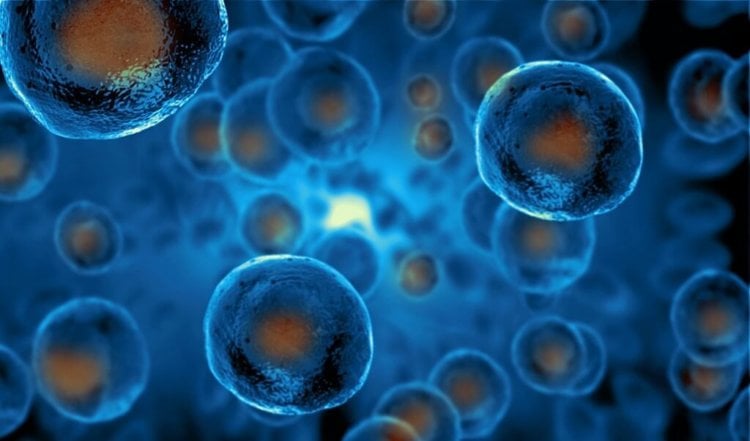Scientists from the University of California at San Francisco used a system of gene editing CRISPR-Cas9 to create the first pluripotent stem cells, which are functionally “invisible” to the immune system. This event is biological engineering in the laboratory allowed to prevent rejection of the stem cells transplants. Because these “universal” stem cells can be manufactured more efficiently than stem cells, which are made specifically for each patient — so often done before — a new discovery brings regenerative medicine closer to reality.

CRISPR and stem cells
“Scientists often advertise therapeutic potential of pluripotent stem cells that can Mature into any tissue of an adult human, but the immune system was the main obstacle to safe and effective stem cell therapy,” says Tobias Deus, doctor of medicine and lead author of the study published in Nature Medicine on February 18.
The immune system is not forgiving. It has been programmed for the destruction of all that is perceived as alien, and thus protects the body from infectious agents and other intruders that might cause harm, if you give them freedom of action. It also means that the transplanted organs, tissues or cells are considered as potentially dangerous penetration from the outside, which is always a strong immune response leading to graft rejection. When this happens, say the donor and recipient are “incompatible histocompatibility”.
“We can introduce drugs that suppress the immune activity and reduce the likelihood of rejection. Unfortunately, suppressors of the immune system make patients more susceptible to infections and cancer,” explains Professor of surgery Sonia Scrapper, senior author of the study.
In the field of stem cell transplantation, scientists once thought the rejection problem can be solved by using induced pluripotent stem cells (IPSC), which are created from fully Mature cells, such as skin or fat cells, reprogrammed thus, to be able to develop into any of a variety of cells constituting tissues and organs of the body. If cells derived from IPSC, to transplant to the same patient who donated the initial cells, scientists thought that the body would see the transplanted cells as “their own” and would not have attacked them using the immune system.
In practice, however, the clinical use of IPSC has been difficult. For unknown reasons, while the cells of many patients have proved resistant to reprogramming. Furthermore, the production of the IPSC was expensive and required time spent on every patient who was treated with stem cell therapy.
“IPSC technology has many problems, but the biggest obstacle is the quality control and reproducibility. We don’t know what makes some cells resistant to reprogramming, but most scientists agree that to know is not yet obtained,” says Deus. “Because of this, most approaches to individualized therapy IPSC was abandoned.”
Deus and Scrapper wondered whether it is possible to circumvent these problems by creating a “universal” IPSC, which can be used to any needy patient. In his new article, they describe how, after the changes in the activity of just three genes, IPSC received the ability to avoid rejection after transplantation, recipients with incompatibility of histocompatibility, with a fully functional immune system.
“This is the first case when someone receives engineering cells that can be universally transplanted, and which can survive in immunocompetent recipients without causing immune response,” says Deus.
Scientists used CRISPR to remove two genes that are necessary for the proper functioning of a family of proteins known as major histocompatibility complex (HCGS) class I and II. GCGS proteins are on the surface of almost all cells and represent the molecular signals that help the immune system to distinguish foreign from native. Cells lacking genes HKGS, do not give out such signals, therefore, are not registered as an alien. However, cells that lack proteins GCGS, become targets immune cells known as natural killer cells (NK).
Working with Professor Lewis Lanier, Shipper found that CD47, a cell surface protein, which outputs “don’t eat me” to the immune cells — macrophages — also has a strong inhibitory effect on NK cells.
Believing that CD47 may hold the key to the complete cessation of rejection, the researchers loaded the CD47 gene in the virus that brought extra copies of the gene in stem cells of mouse and human, of which was removed proteins GCGS.
CD47 actually turned out to be the missing piece of the puzzle. When the researchers transplanted their ternary mouse stem cell-incompatible mice with normal immune systems, they did not see any rejection. They then transplanted similarly engineered human stem cells are so-called humanized mice have immune systems are replaced by components of the human immune system — and again saw nothing.
In addition, researchers have extracted different types of heart cells from these triple engineered stem cells. Derived from stem cells heart cells were able to live long enough to even form rudimentary blood vessels and heart muscle. Perhaps one day they can be used to restore the failing hearts.
You approve the use of CRISPR to treat a man? Tell us in our chat in Telegram.